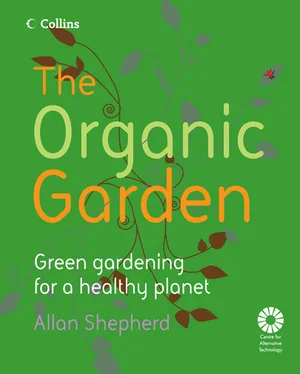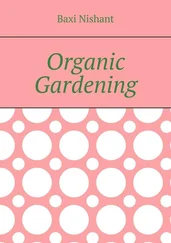Ethical choice: natural finishes
Gone are the days when everyone covered their fences with creosote or white paint as a matter of course. The average can of paint contains fungicides, heavy metals such as cadmium, and polycyclic aromatic hydrocarbons. Titanium dioxide, used in most shades but particularly in ‘brilliant white’, is a possible carcinogen and can cause respiratory problems and skin irritation. Paints also give off VOCs (volatile organic compounds) when drying. VOCs are known to induce eye, nose and throat irritation, headaches and dizziness; some are suspected or known to cause cancer in humans. There is now a range of environmentally sound alternatives for waxing, polishing, painting, decorating and otherwise preserving internal and external surfaces. CAT sells some of them, as does www.greenshop.co.ukand www.greenbuildingstore.co.uk.Brands include Auro, Green Paints, Stuart Furby’s Lime Earth Paints, Ty Mawyr Lime, Eco-strip, Holkham Linseed Paints, Osmo Uk, Earthborn, La Tienda, Treatex and Clearwell Caves.
stakes use local untreated chestnut, which lasts longer in the soil. Bash the stakes in at 2-metre intervals with a sledgehammer and draw the wire as tight as you can before fixing it in place using a hammer and 10-mm fencing staples. For more information on hedges, see pages 80–82.
Walls tend to be made out of earthen materials (i.e. those that come out of the ground), although you do get some very nice walls that mix earthen materials with wood – a technique known as cordwood masonry. If you want a stone wall, research which stone is local to your area and buy accordingly for a wall that fits in with your local environment. Alternatively, use reclaimed brick ( www.salvo.co.ukor check with local builders’ merchants), or make your own – see left. Making your own bricks gives you a great sense of pride. Organics is all about gaining confidence by doing it yourself. Avoid using concrete blocks. Many show gardens have experimented with walls made with recycled materials, including old bottles, tin cans, rubble, and so on. These are either built using a binding material such as mortar, or more simply stacked in rows using gabions. Gabions are steel mesh boxes primarily used in the road building and construction industries. Now you can get garden-sized gabions from www.stones3.co.uk.Fill the mesh up with natural stone, reclaimed building rubble or any material that will hold weight.
Cob is used extensively by eco-builders. It is made by mixing subsoil with straw and water, and then pounding or treading it down to form free-standing walls (see page 57). In a similar vein, rammed earth, mud bricks and stabilised earth blocks are all popular natural building materials for walls.
Grass is the most obvious soft landscaping choice for a seating area. If you’ve got a large lawn and want to cut down on the mowing, think of leaving some of it to grow longer into meadow and keep only a small patch of regularly cut lawn for seating. Meadow lawns need only be cut two or three times a year, saving energy and creating a habitat for wildlife (see page 165). You can get different mixes of grass seed nowadays, catering for different uses and sites: www.organiccatalog.comis a good place to start looking. Wiggly Wigglers, www.wigglywigglers.co.uk, have also launched their own cut wildflower turf which you can lay like ordinary turf.
For something a little shorter than a meadow, plant an informal lawn with flowering bulbs. Plant spring bulbs and your lawn will be free of flowers and ready to walk on by the time it comes to summer socialising. Remember that lawns get very scuffed up if you have to do heavy work in the garden. My own lawn is more or less dead but I plan to reseed it with a shade-tolerant seed mix when work is complete.
Woodchip can be used as a non-living soft landscape material for seating areas and paths. It can be laid directly onto the soil, but to ensure seating areas and paths are kept weed free, it’s best to use a permeable geo-textile membrane underneath. The membrane is laid in a single layer and the woodchip poured on top until it covers all the membrane to a depth of at least 5cm. Most garden centres sell woodchip – usually recycled from forest waste. Geo-textile membrane tends to be made from plastic: for a more natural alternative try Hemcore Biomat. This is made in Essex from hemp grown in the UK without the use of pesticides and herbicides.
www.traceytimber.co.uk,sell woodchip made from reused pallets. Biomat is available from www.amenity.co.ukand www.ewburrownursery.co.uk.Try www.rooster.uk.com, www.drgrowgood. co.uk, www.specialistaggregates.co.uk– all sell shells, a by-product of the fishing industry. Recycled glass chippings are available from these sites: www.derbyshireaggregates.com, www.decogem.comand www.rbgc.co.uk.Also try www.stevemassam.co.ukfor crushed brick from factory rejects, and www.salvo.co.ukand www.reuze.co.uk.
Woodchip is a low-impact material and will need replacing as it rots. Hard landscaping materials such as timber decking and concrete paving slabs last longer. Both of these can be destructive to the environment: source FSC-approved timber decking or reclaimed materials from salvage yards. Try Ashwell’s Recycled Timber Products, and Wideserve and BPI Recycled Products for recycled decking. A wide range of long-lasting ‘chipped’ hard landscaping materials – shells, glass, crushed brick – are available. Again these should be laid on top of a permeable membrane to prevent weed growth.
The word organic doesn’t just refer to plants, it means all the materials you use to make garden essentials such as sheds and benches. Here are some ideas to get you started.
Now that you’ve decided on the basic structure of your garden, the next thing you need is a bench. Some people may argue for shed, tools, seeds, but I reckon bench. Of course, under the bench heading I’d include hammock, chair swing, stool, recliner, deck chair, turf chair, chaise longue or anything upon which one may park one’s bottom – or, even better, lie down. Somewhere from which to survey the garden, dream dreams, make plans and entertain guests. I’ve shaped a whole area of my garden around a bench and postponed planting the beds around it until I know it works as a good place to sit. That’s how important this bench thing is to me, and my benches are organic.
The natural materials to use in my garden are slate and wood. These are the two materials that lie beneath and around me in huge quantities. So it’s quite in keeping with the garden to use waste slate and wood materials wherever I can. The previous owner left copious quantities of both when he left and I’ve been cursing him ever since I moved in. But when I got round to making my bench I said a little prayer for him instead.
You have to know that my garden is made up of a set of flat and sloping steep terraces, a large, slightly messy pond and a variety of slate walls, all facing north-east. The sun shines in the morning on all parts of the garden but only on one part from the afternoon on (the small plot I have given over to those sunlight-hungry families of plants we call vegetables). My bench sits snugly into the sloping earth overlooking the pond. It gets the morning sunlight beautifully (apart from about one half hour or so when the sun passes behind an enormous conifer planted by my neighbour as a 30cm-high sapling thirty years ago). When the day is at its hottest, the bench is only dappled by sunlight and becomes a fantastically cool place to retreat to when working the garden is no longer a pleasure. Before I cleared the area it was a mass of old building timber, chicken wire and felled conifer hedge – a combination of the previous owner’s waste and my own garden trimmings. Clearing it has been a monumental task and it would have been easier to have put my bench somewhere else, but nowhere else would do. From here I am close enough to my pond to see my frogs blink and far away enough from my neighbour’s titanic decking (which haunts my garden like a hovering buzzard) to avoid the hot fat that I feel sure will rain down upon me if they ever have a barbecue when I’m lying on my lawn.
Читать дальше












